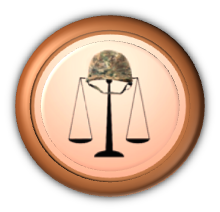|
General PTS Statistics
Among all Americans, about 6.6% of the
population will suffer from PTS at some point in their lives; 3.6% of men and
9.7% of women. By contrast, PTS among
male veterans of the Vietnam conflict is estimated at nearly 31%. In the wars in Iraq and Afghanistan, some
research has discovered that up to 1 in 5 combat veterans who were deployed in
areas once described as “front-line” meet the criteria for PTS. In contemporary
theatres of warfare, the “front line” is often ever-present. In Vietnam, Iraq
and Afghanistan, enemy combatants were not in uniform, not easily identified; a
consistent existential threat.
Some Basic Statistics about Veterans Combat Experience:
- 36.7% Received small arms fire
- 56.9% Received incoming artillery,
rocket or mortar fire
- 18.1% Handled or uncovered human
remains
- 34.1% Saw dead or seriously injured
Americans
- 57.1% Knew someone seriously injured
or killed
- 47.4% Saw dead bodies or human
remains
- 45.4% Had a member of their unit
become a casualty
PTS Symptomology
In reliving the trauma of the events which
have brought on the condition, many veterans suffering from PTS will look for
ways to escape from or alleviate the affects of these memories. The chronic
anxiety produced by these affects can be completely debilitating. Alcohol and drug use are common methods used
to counteract it. They begin as essentially efforts at self-medication and, in most
instances, substance use develops into abuse and compounds the problem.
At the other end of the stress-spectrum, emotional
numbness can lead the veteran to become a thrill-seeker in an often futile
effort to reconnect with his emotions. For
some veterans, thrill-seeking is an effort to reconnect with “the high,” the
emotional rush they experienced during combat. Still others find themselves
feeling the need to be on guard at every moment, seeing in every action around
them a threat and a reason to lash out. Some veterans experience unbearable
guilt, either for surviving an event which others did not, or in perceiving some
effort they might have taken to protect others but didn’t. These veterans may
go looking for trouble, committing acts for which they will be caught and
punished or even killed. Every symptom of PTS can lead to violent behavior or
other criminal activity.
PTS among veterans can be exhibited in ways
quite different than PTS within the general population. First, military training and combat
essentially reinforce some of the symptoms associated with PTS - most notably
hyper-vigilance, a behavior which is critical under combat conditions and even
rewarded during military training. Second, while civilians suffering from PTS
are almost always passive victims, veterans are usually unwilling but
nevertheless active participants within their trauma. Finally, the extended
nature of deployment and combat also create conditions which are likely to
deepen and expand the symptoms associated with PTS among veterans.
The most undeniable difference in PTS symptomology
among veterans is that it may remain dormant for years, and therefore go
untreated. A civilian in a violent
traffic accident most often experiences PTS immediately, and can obtain
immediate treatment as well. Untreated dormant military-related PTS may fester,
which can lead to more serious consequences when it finally surfaces. Dormancy
may be another reason that lower levels of PTS have been observed in veterans
from the Iraq and Afghanistan conflicts than among Vietnam-era veterans. With
the passage of time, more veterans from later wars may yet develop PTS.
Perhaps the greatest contrast between
civilian PTS and the form suffered by veterans is aggression. Nearly every
individual with PTS experiences anger, but veterans are far more likely to develop
patterns of aggressive, anti-social behavior. Some veterans exhibiting
aggression as a PTS symptom will become openly hostile. However, the majority
of hostile acts committed by veterans suffering from PTS are impulsive, not
pre-meditated; they are irrational acts, not rational ones pursued with an
actual objective in mind. And what is perhaps more important to acknowledge
here is that PTS is treatable. With timely and appropriate treatment, evidence-based
therapies yield a high rate of success.
The
Stigma of PTS
The stigma of admitting that a veteran has a
psychological problem is a significant barrier to getting treatment both prior
to involvement in criminality and during the disposition of these veterans’
cases. While those without these traumatic
conditions might well intellectually understand that treatment can help,
veterans with these conditions are cognitively affected by them. This often
prevents them from seeking treatment on their own. And even those who are
unaffected by trauma may be affected by the stigma.
A case can be made that treatment options
such as veterans treatment courts, available to the newer generations of
veterans, may counteract these affects in ways not available to older veterans.
The chronic nature of anti-social and criminal behavior among older veterans
may not be repeated among this newer generation if they receive early
treatment, before their PTS symptomology becomes incorporated fully into their
daily environment and character. Once PTS has incorporated, it is much more
resistant to treatment. Thus, persons
serving multiple tours in combat may have layer upon layer of symptomology
which left untreated becomes resistant to recovery.
PTS
and Confinement
PTS is often aggravated by imprisonment. A
veteran released after completing a sentence may be more of a risk leaving jail
than he was at sentencing. Sentences tend to be short for veterans because in
their pre-military civilian lives most had never been in trouble with the law,
and their offenses are often not serious enough to warrant long periods in
detention. But if they are suffering from PTS or another serious mental health
condition brought on by military service, confinement instead of treatment
creates the potential for repeat offenses. Delays in onset of treatment cause
the condition to become more treatment-resistant as the symptomology is
integrated into one’s character and self image.
Early diagnoses and timely treatment yield the best results.
|





